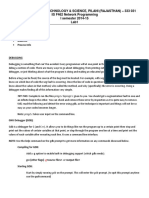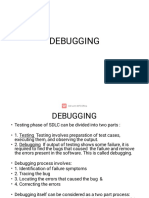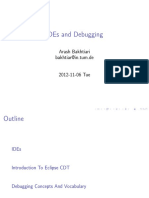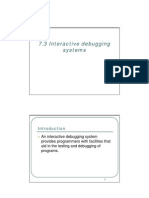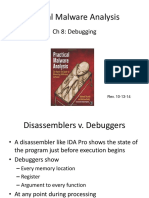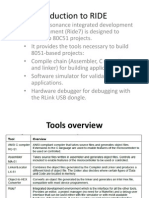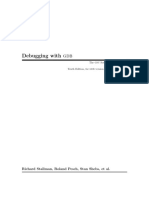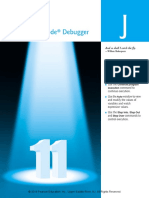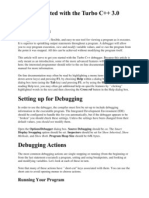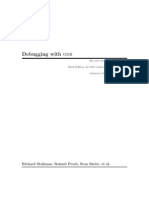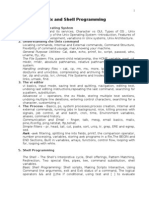0% found this document useful (0 votes)
18 views27 pages2024 2 PM Lab2 Lecture04 Debugging
The document provides an overview of debugging techniques and processes in programming, including error types such as compilation, link, and runtime errors. It discusses various debugging methods like print debugging, interactive debugging, and the use of breakpoints to inspect code and variable values. Additionally, it outlines the differences between debug and release build modes, along with sample code to illustrate debugging concepts.
Uploaded by
ts21055Copyright
© © All Rights Reserved
We take content rights seriously. If you suspect this is your content, claim it here.
Available Formats
Download as PDF, TXT or read online on Scribd
0% found this document useful (0 votes)
18 views27 pages2024 2 PM Lab2 Lecture04 Debugging
The document provides an overview of debugging techniques and processes in programming, including error types such as compilation, link, and runtime errors. It discusses various debugging methods like print debugging, interactive debugging, and the use of breakpoints to inspect code and variable values. Additionally, it outlines the differences between debug and release build modes, along with sample code to illustrate debugging concepts.
Uploaded by
ts21055Copyright
© © All Rights Reserved
We take content rights seriously. If you suspect this is your content, claim it here.
Available Formats
Download as PDF, TXT or read online on Scribd
/ 27









